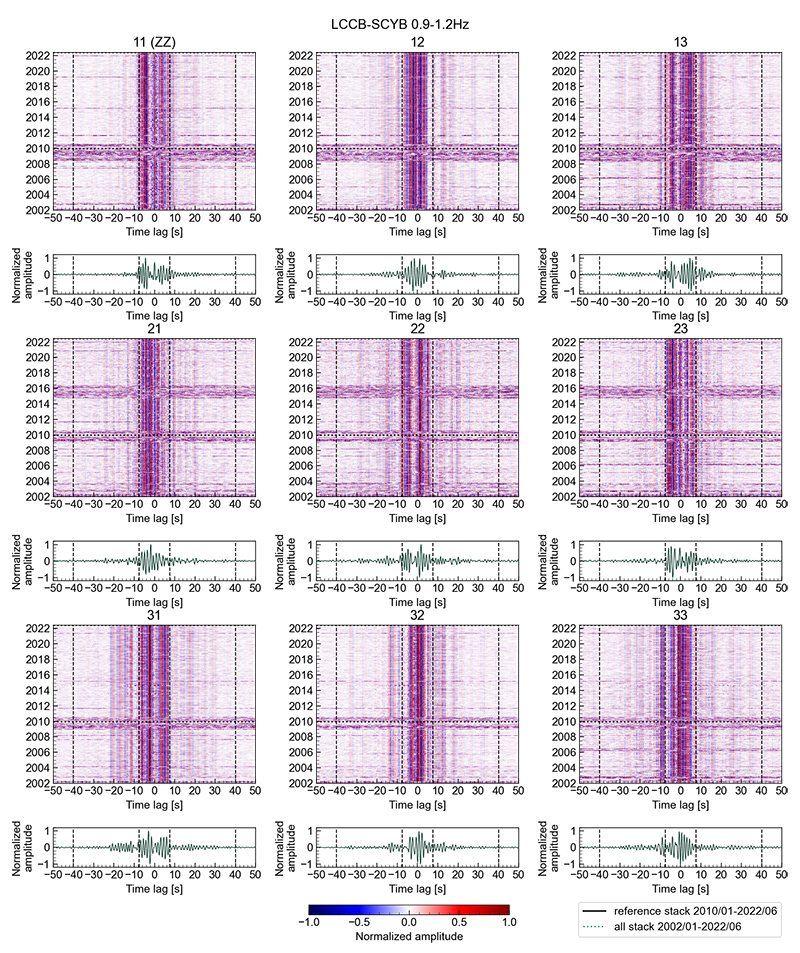Earthquake mechanism from µs to decades
Laboratory Experiments
Verifying and Expanding Theoretical Predictions through Large-Scale Laboratory Friction Experiments.
By controlling source conditions and minimizing uncertainties in both source characteristics and wave propagation paths, we seek to validate theoretical hypotheses regarding earthquake rupture processes. Furthermore, we update the source mechanisms inferred from these laboratory experiments, which will contribute as analogs for natural earthquakes.- Okubo, K., Yamashita, F., and Fukuyama, E. Dynamics of non-self-similar earthquakes illuminated by a controlled fault asperity, under review,
Preprint: doi:10.21203/rs.3.rs-6553961/v1.
Seminar Talk
Dynamic Rupture Modeling
Spatiotemporally High-Resolution Fault Rupture Dynamics: Essential for Understanding Earthquakes.
 Modeling dynamic earthquake ruptures with co-seismic off-fault damage, by incorporating small-scale source heterogeneities, using the combined finite-discrete element method (FDEM) implemented in the Hybrid Optimization Software Suite (HOSSedu). We investigate their effects on rupture dynamics, seismic radiation, and the overall energy budget.
Modeling dynamic earthquake ruptures with co-seismic off-fault damage, by incorporating small-scale source heterogeneities, using the combined finite-discrete element method (FDEM) implemented in the Hybrid Optimization Software Suite (HOSSedu). We investigate their effects on rupture dynamics, seismic radiation, and the overall energy budget.Gallery
- Okubo, K., Bhat, H. S., Rougier, E., Marty, S., Schubnel, A., Lei, Z., Knight, E. E., and Klinger, Y. (2019) Dynamics, Radiation, and Overall Energy Budget of Earthquake Rupture With Coseismic Off-Fault Damage. J. Geophys. Res.
doi:10.1029/2019JB017304. - Klinger, Y., Okubo, K. et al. (2018) Earthquake damage patterns resolve complex rupture processes. Geophys. Res. Lett.
doi:10.1029/2018GL078842. - Jara, J., Bruhat, L., Thomas, M. Y., Antoine, S. L., Okubo, K., Rougier, E., Rosakis, A. J., Sammis, C. G., Klinger, Y., Jolivet, R., and Bhat, H. S. (2021) Signature of transition to supershear rupture speed in the coseismic off-fault damage zone. Proc. Math. Phys. Eng. Sci.
doi:10.1098/rspa.2021.0364.
Ambient Noise in Observational Seismology
Monitoring Fault Over Decades to Address the Earthquake Generation Mechanisms in Real Time Scale.

The decadal, terabyte-scale seismic dataset enables the investigation of fault state evolution. We conducted ambient seismic noise cross-correlation using 20 years of data from Parkfield, operated by the High-Resolution Seismic Network (HRSN) and archived at the Northern California Earthquake Data Center. Using in-house Julia-based software, SeisIO.jl (currently maintained as SeisBase.jl), and a comprehensive software package SeisMonitoring.jl, we were able to handle this large dataset.
Gallery

- Okubo, K., Delbridge, B. G., and Denolle, M. A. (2024) Monitoring velocity change over 20 years at parkfield. J. Geophys. Res.
doi:10.1029/2023JB028084. - Jones, J. P., Okubo, K., Clements, T., and Denolle, M. A. SeisIO: A Fast, Efficient Geophysical Data Architecture for the Julia Language. Seismol. Res. Lett.
doi:10.1785/0220190295. - Yang, X., Bryan, J., Okubo, K., Jiang, C., Clements, T., and Denolle, M. A. Optimal stacking of noise cross-correlation functions. Geophys. J. Int.
doi:10.1093/gji/ggac410.
Open research
Research to Achieve Open Research.
Given the complexity of the modeling and processing tools, reproducing the results from scratch becomes increasingly difficult. To address this challenge, we have collected a comprehensive set of Jupyter notebooks available through the GitHub repository, along with uploading the data to an archive. We hope that even a small portion of these resources can contribute to future applications and research efforts.
Examples
- CCF archive in cloud storage DASway (UW)
- Documentation to reproduce figures:
- Minimum working example of SeisMonitoring.jl:

- Estimate poles and zeros of sensors:

- Removal of sensor response:

